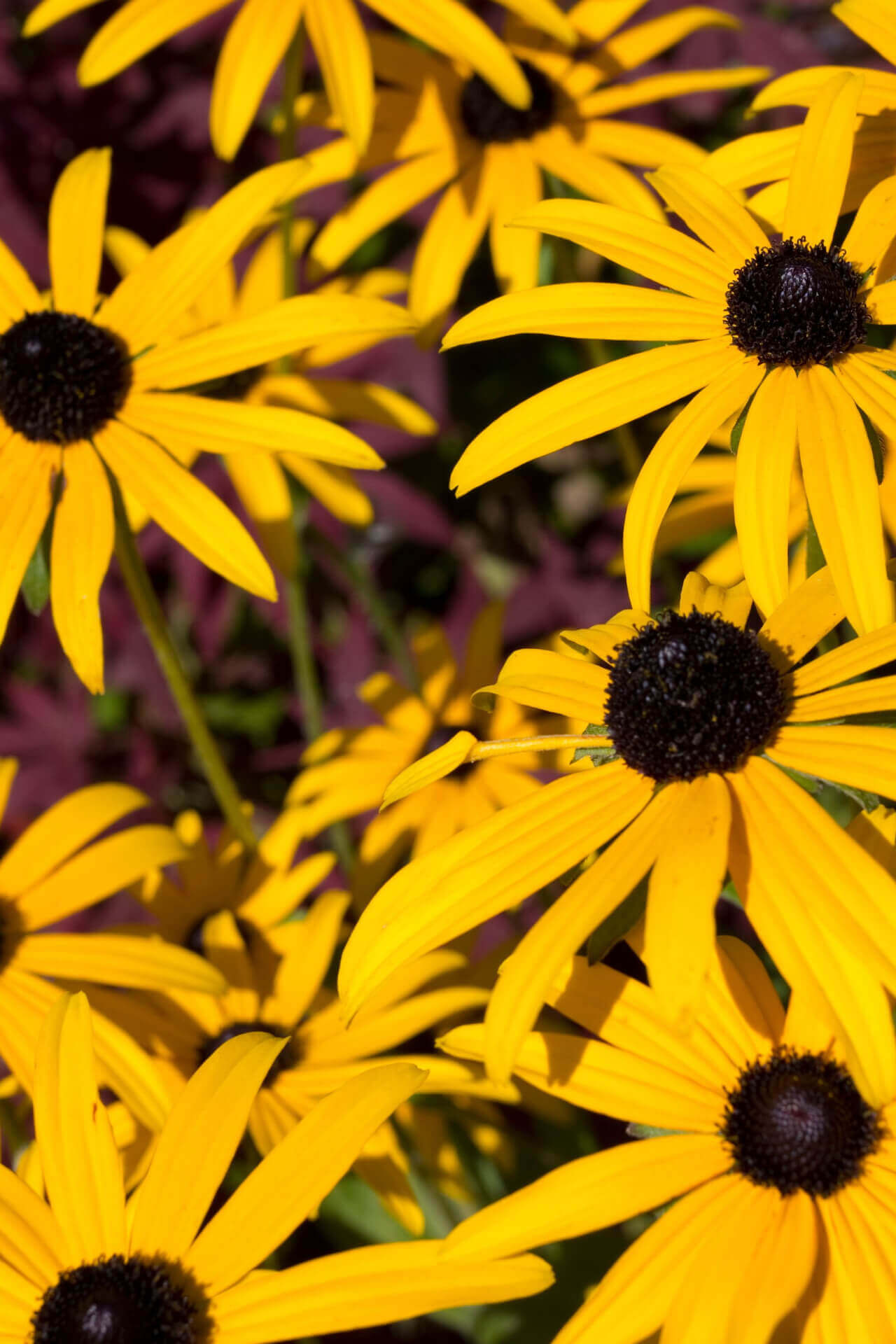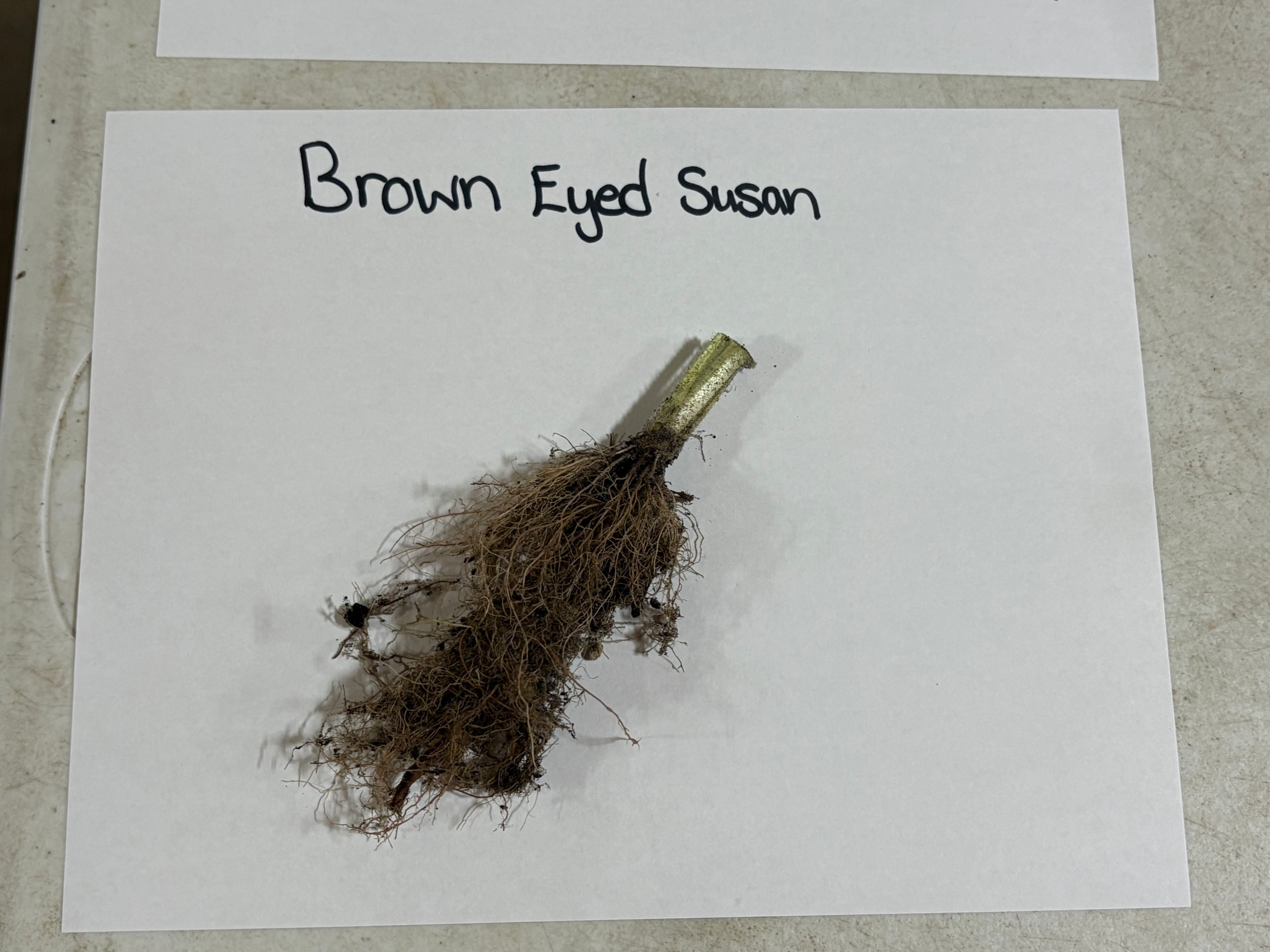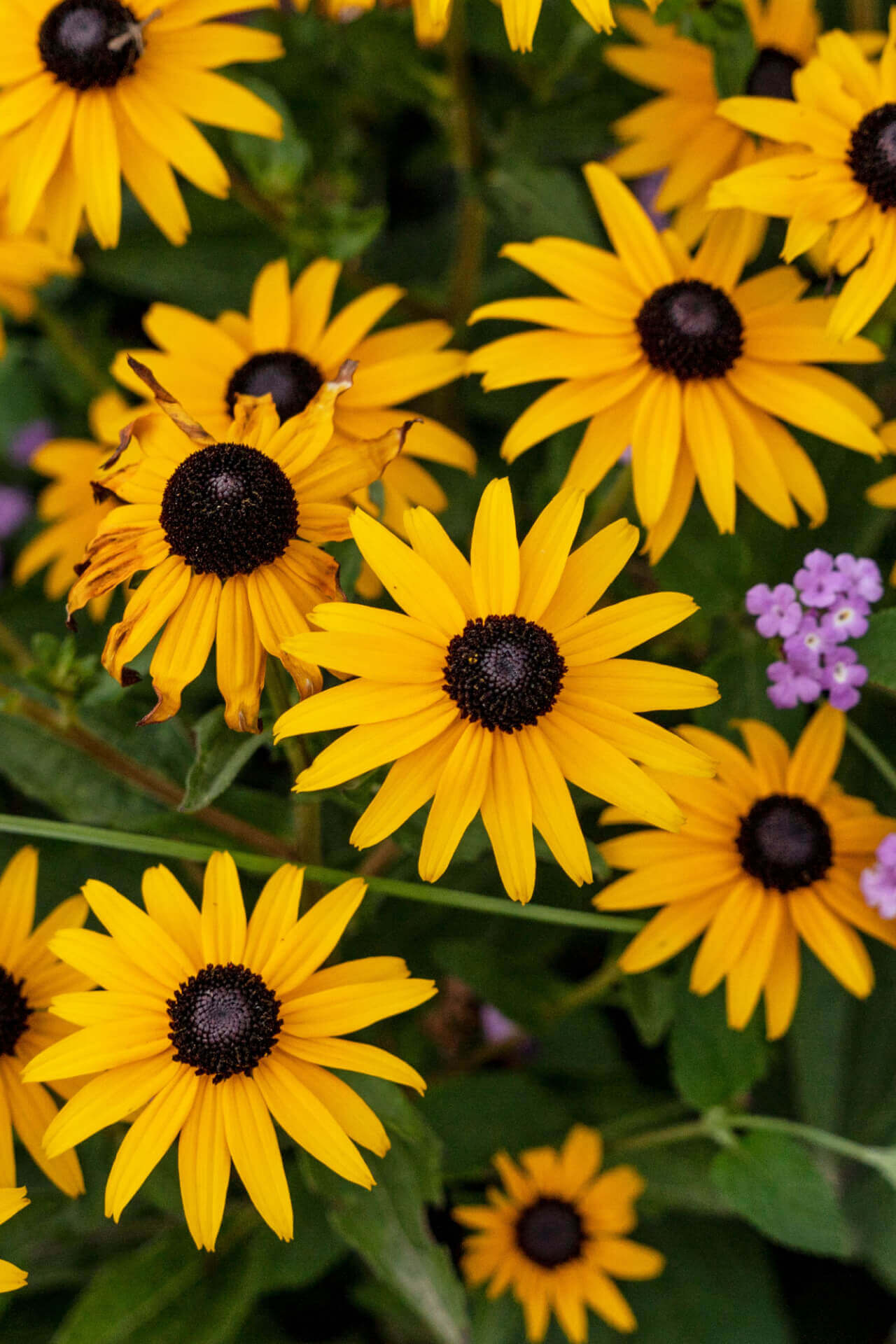Brown Eyed Susan For Sale
The Brown-Eyed Susan perennial is a lush, bush-like plant that gives gardens beautiful greenery until it flowers in its second year. Once established, it is a resilient, self-seeding plant that takes hold for good in almost any climate.
Its blossoms are striking, characterized by their deep brown center and stunning golden petals. A profuse self-seeder, it can potentially overwhelm small landscapes, but it is a perfect addition to a native or prairie garden surrounded by other prairie flowers.
Plant Details - Brown Eyed Susan Plants
Family: Asteraceae
Light Requirement: Full sun
Water Needs: Moderate
Height: 2 ft-5 ft
Spread: 2.5 ft
Growth Rate: Moderate-Rapid
Soil Preference: Moist, well drained
Bloom Time: Late summer - hard frost
Flower Color: Yellow
Notable Characteristics - Brown Eyed Susan
The Brown-Eyed Susan has a deep brown, cone-shaped center that fades to light brown at the edges, surrounded by eight golden petals. These plants are commonly mistaken for their siblings, the Yellow Coneflower and the Black Eyed Susan, but can be identified by their oval, lobed petals and their lanky, bush-like shape.
The petals grow horizontally outward from the base of the cone center, angling only slightly downward, making the flower face visible, even from across the garden. Its brown, slightly woody stems can grow up to 5 ft high with multiple branches that all end in a small, yellow blossom.
This flower is a captivating use of vertical space in your garden, as empty air becomes a sea of soft yellow blossoms.
Landscape and Maintenance of Brown Eyed Susan Plants
These American natives are commonly found from New York to Minnesota, and south to Utah and Texas, across the prairie landscape. The Brown Eyed Susan prefers moist, well-drained soil and full sun, but is remarkably drought resistant, making it a hardy plant well-suited for areas of mixed climate.
Brown Eyed Susans attract pollinating insects like bees, butterflies, wasps, and flies, and also serve as the host plant for the larvae of some moth and butterfly species. It is a crucial part of a native ecosystem in any Midwest, prairie climate, visually and biologically complimenting tall, native grasses and prairie wildflowers.
Exposure
Brown Eyed Susans thrive in full sun, ideally acquiring at least 6 hours of natural sunlight daily. They can tolerate partial shade but may have fewer blooms and more leggy growth in less sunlight.
Height at Maturity
Over 12"
Usage
Pollinator Plant
Shipped As
Bare-root
Ships
USPS
Planting Zones
3-9




